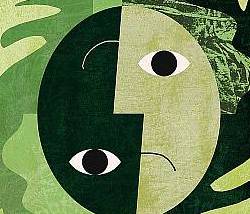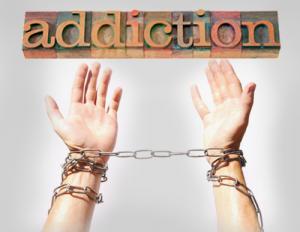Articles
In ‘n nuwe verhouding maar ek hunker en verlang na my eks
Verhoudings is nie altyd maklik nie… en om op te breek is soms bitter swaar; veral as dit 'n langtermyn verhouding was. Al wil sommige van ons dit dalk graag ontken, is dit tog maar 'n proses om deur dinge te werk en te kan aanbeweeg. In hierdie artikel, beantwoord ek 'n paar vrae rondom verhoudinge en ekse.
Lies and my relationship
Healthy relationships are ones where trust is a very definite and present component between two people. Dishonesty, for whatever reason, has the ability to shatter this trust, which could completely destroy the emotional connection and -security in a relationship. Intentions and context are relevant aspects to take into consideration, and there could be scenarios that do not warrant reactions of certain magnitudes. Once trust has been broken in a relationship though, even smaller, seemingly unimportant things, could become very definite triggers of emotional insecurity and suspicion. Although there are certain instances where lies and withholding of information are warranted to a degree…
A New Year, a New Mind-Set Towards Healthy Relationships With Adult Parents
Remember, parents are basically always going to be parental. This means that when a parent in some way gets involved in his or her adult child’s personal problems, the parental instincts will kick in. Years of powerful emotional connection simply cannot make way for clear and objective analysis, support and feedback. And when we have a third person or more involved (such as a spouse or grandchild), good intentions can lead to relational conflict no one hoped for.
Hoe kan JY 2016 die beste jaar ooit maak?
Die eerste maand van die jaar is al amper verby. Jy kan jou kalender amper al na Februarie omswaai. Dalk het jy nuwejaars voornemens vir jouself gemaak en het jy vol hoop beloftes gemaak dat 2016 die jaar sal wees waarin jy jou drome vervul, gaan reis, kookklasse neem, meer tyd aan jouself bestee, aan jou verhoudings gaan werk of ‘n nuwe stokperdjie beoefen. Dalk het jy die jaar ingestap met geen vooropgestelde idees of voornemens nie. Waar jy ookal op die kontinuum lê, is ek seker jy het hoop dat die jaar wat voorlê vol opwinding, sukses, goeie gesondheid, liefde en vrede sal wees, maar hoeveel beheer het jy nou eintlik oor wat die jaar vir jou inhou?
The Illusive Butterfly Called Happiness
Happiness is a state of mind. It is created by one’s own mental well- being. Hundreds of self-help books exist that point to how this can be achieved. However, the reader during this exploration does not meet the opportunity to share their thoughts. Thus not obtaining much needed feedback on their thinking processes that would deepen their understanding.
Bipolar disorder – the reality of living with this lonely disorder
“In the mirror I see a creature that I must unwillingly share my mind and heart with. I feel alone in a world filled with people, and yet it all seems silent and meaningless. Some days I feel like I can conquer the world, some days I can’t even find the courage to get up and get dressed. I feel like I’m in a constant state of confusion, a constant rollercoaster ride that never ends. The people close to me feel very far away…they don’t understand. Yet I don’t want them to. I don’t want others to feel the way that I do, to live with the monster that I have become. Will I ever get better? Is there any hope in a world that judges you as weak and crazy, a world that seems cold and dark… I just don’t know. Sometimes I just want to be alone, hiding from the world, yet the loneliness can be unbearable.”
Identifying Behaviours in Problems of Addiction
Having worked in the field of mental health as a professional counsellor for the last 10 years I have had to deal with the concept of “addiction” more often than not. The last 4 years I have also worked on a daily basis at an inpatient alcohol and drug rehabilitation clinic. What I came to understand was that some of the core behaviours of an addiction problem really seem to be universal to almost all of the behaviours we might categorize under the word addiction. Whether we are talking about obsessive and compulsive behaviours such as eating disorders, compulsive gambling, alcohol and drug abuse/dependency, sexual compulsivity, or any other phenomenon where the word “addiction” comes to mind, we see a certain number of behaviour and thought patterns which look almost exactly the same in each of the abovementioned behaviours.
Why do a school readiness test?
A psychological assessment of a young child’s readiness takes into consideration as many factors as possible that could impact on the child’s formative years and initial experiences of school. It is followed by a detailed background record, pre-school reports, parent interviews, and other collateral evidence which might assist the psychologist to get a full profile of the child.
School readiness matters – in all grades and phases
We as parents are obligated to know that children’s developmental needs are different for each child and that children mature differently. Each child is an individual with specific talents and in some cases deficits. Your children are mostly writing exams at this time of the year. The report will be a good indicator of where support and guidance is needed. But we also need to remember that academia is but one part of the child’s growing up. Blaming the school for the child not progressing would be too simplistic, as we know, that school is but one factor that determines academic success.
Anorexia Nervosa en vermydende/beperkende voedseliname versteuring (avoidant/restrictive food intake disorder)
Hierdie artikel is deel van ‘n reeks artikels wat fokus op die verskillende eetversteurings waaraan individue ly. Die eerste artikel genaamd ‘7 miete en feite: Wanneer ‘n eetversteuring jou insluk…’ was ‘n inleiding tot eetversteurings en het verskillende kwessies soos mietes en feite aangespreek. Die tweede artikel het gefokus op twee unieke eetversteuring wat nie alombekend is nie, maar wat individue wel aan ly: Pica eetversteuring en herkou eetversteuring.
Hierdie artikel sal Anorexia Nervosa en vermydende/beperkte voedselinname eetversteuring beskryf.










